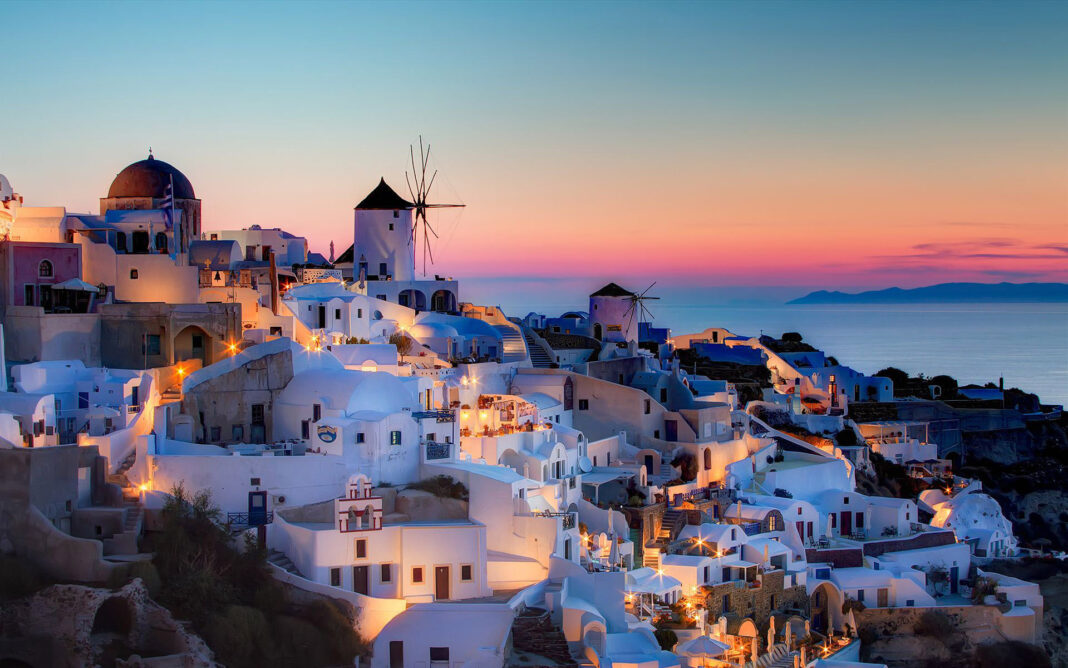Travel to Crete :
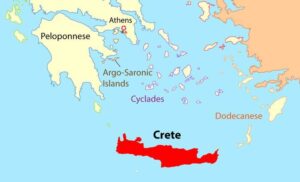
Crete is an island in the southeastern Mediterranean Sea, the largest of the islands belonging to Greece.
The island is divided into 4 regions.
From west to east: Chania
Rethymno
Heraklion
Lassithi
Crete has three passenger airports – Chania in the west, Heraklion in the center and Sitia in the east of the island. All three receive regular flights from Athens and, less frequently, from Thessaloniki or other Greek cities. From April to October, dozens of seasonal flights are added from different points in Europe. The largest selection is in Heraklion, slightly less in Chania, and in Sitia, even in the height of the season, there are only a few flights per day. In the summer, Aeroflot operates direct flights from Moscow to Heraklion, and charters also fly. In the low season, you need to fly via Athens, see also Greece.
WHAT TO DO WITH KIDS IN CRETE:
LABYRINTH PARK:
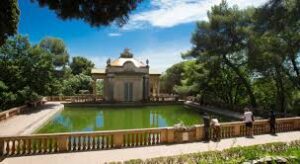
When on holiday in Crete, you can’t help but come into contact with the myths of Ancient Greece – images of gods, heroes and monsters are everywhere. But the opportunity to turn from an observer into an active participant in events is rare. But in the Labyrinth Park, everyone can visit Theseus’ place, wander along the tangled paths and defeat the Minotaur. A trip here is a good way to introduce a child to an ancient legend and have a great time with the whole family.
The park occupies an area of 1,300 sq. m. A labyrinth is built from wooden partitions, the total length of the paths of which is about 1 km. It is up to you how to find the path to the center of the labyrinth: move at random, develop a strategy or use hints. Hints are ladders with platforms and towers, you can climb them and inspect the nearest paths, or even climb over the wall. If you manage to complete the entire path in the allotted time, completing several tasks, you will receive a prize. But even if you have to wander longer, the real reward will be the exit you find. Note that it usually takes 35-40 minutes to figure out the intricacies of the paths.
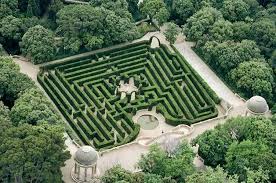
The organizers of the labyrinth do not specify whether it is possible to use Ariadne’s thread to get out of the tangle of corridors, but visitors will be in for another surprise: the bloodthirsty Minotaur is locked in a cage and cannot harm those who decide to come here. Another gift is that the design of the labyrinth changes every day, so you can visit it more than once. The park also has other family entertainment.
For example, a mini-golf course with 18 holes is suitable for both getting acquainted with this game and for experienced players to demonstrate their skills. Active children will be happy to arrange a quad bike race on a special track. Here you can also get lessons in horse riding, archery, and pottery. The little ones will love the mini-farm, and culinary experts will be interested in visiting the organic garden where Cretan herbs grow.
If your child is interested in history, you can watch films about the Minoan civilization in the park’s demonstration hall. Since the park is open-air, we recommend bringing a hat and a bottle of water. For those planning to spend a few hours in the “Labyrinth”, there is a cafeteria.
AGRECO FARM:
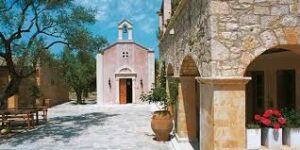
The Cretan farm Agreco is located in the small village of Adele, a picturesque area near the city of Rethymno. It belongs to the famous Greek hotel chain Grecotel. A visit to this place in Crete will bring a lot of pleasure to both adults and children. The farm, which occupies an area of 40 hectares, was opened in 2002 and has since become very popular among guests of the island. All the buildings located on its territory are made using elements of Cretan and Venetian architecture of the 17th century, which makes this place truly fabulous and very cozy. Agreco is a family business of Nikos Daskalantonakis.
By opening the farm, its members wanted to demonstrate a model farm where pesticides and inorganic fertilizers are not used at all, and great attention is paid to the environment. Here, they carefully preserve and continue to use traditional methods of cultivating the land, sowing and growing crops, breeding livestock. Agreco fields grow ecological and organic vegetables and fruits, other crops, breed animals, supplying all these products to the Grecotel hotel chain in Crete. On the farm’s territory there is a mini-zoo, where deer, wild goats, quails, partridges, guinea fowl, pigeons, wild boars and many other animals live.
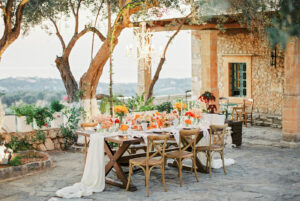
In addition, everyone can visit the open-air museum, where you will be told and shown how olive oil is produced, wine is made, traditional Cretan bread is baked from barley flour, cheese is made and even how sheep are sheared (everyone can take part in this exciting process themselves). A trip to the farm will be especially interesting and educational for the youngest tourists, because they will be able to see, learn and try so many new things. Children on the farm bake bread and pizza, collect eggs, feed the animals, and the bravest can try to milk a goat.
After the tour, be sure to visit the wonderful tavern, where the food is prepared using products brought straight from the farm. Here, the chef will pamper all visitors with exquisite and incredibly delicious dishes, which are prepared according to a special, centuries-old traditional recipe. In the Agreco brand store, you can buy farm products – environmentally friendly products.
SPINALONGA:

Opposite the resort town of Elounda, in the Gulf of Mirabello, there is a small island of Spinalonga. It is a remnant of land that went deep under water during an earthquake. Today, Spinalonga is marked on maps as Calydon. Excursion boats regularly go there, taking curious tourists to a land full of history and mysteries. We invite you to take a short sea voyage and spend a few hours on Spinalonga.
The island has a long, sometimes tragic history of its existence. On its territory, in 1579, the Venetians built an impregnable fortress to protect the Gulf of Mirabello, which subsequently fulfilled its functions with dignity, protecting the ancient city of Olonte (present-day Elounda) from external enemies and territorial encroachments for many centuries. Now this fortress is abandoned.
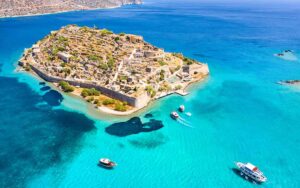
For children, this is a real paradise: they can climb on its ruins, while adults enjoy the sea views. From 1903 to 1957, the island became a place of refuge for lepers, who were brought here not only from Crete, but from all over Greece. According to the residents of the nearby islands, strange sounds reminiscent of human voices are often heard from Spinalonga at night. They believe that these are the restless souls of soldiers who died in the battles for Mirabello Bay, or the souls of lepers who once whiled away their lives in this place. Today, the island is considered uninhabited and is the only archaeological site in Crete that is not protected.
On Spinalonga, there are preserved buildings where the sick lived, a church, a hospital, a cemetery, a small pier where new patients, provisions and mail were delivered. Spinalonga attracts tourists with its history and enchants with its beauty. Be sure to take a couple of photos for memory – thanks to the fabulously beautiful landscapes, the most beautiful photos from your Cretan holiday are brought from here. For a trip to the island, we recommend wearing closed and comfortable shoes, be sure to take a hat and water with you. For the excursion, it is better to choose a time in the morning or evening, when there is no scorching sun.
LYCHNOSTATIS MUSEUM:
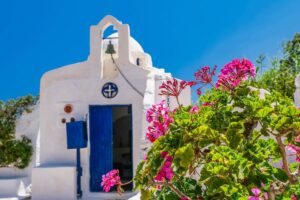
If you get to the open-air Lychnostatis Museum, you will understand why its name translates as “lamp”. The relatively small territory of this famous Cretan museum illustrates and, as it were, “illuminates” the traditional life of the Greek island with all its charms and highlights. Lychnostatis is located almost by the sea in the eastern part of Crete, the land was chosen and purchased specifically for the opening of the museum by Professor Yiorgos Markakis, who, together with all members of his family, arranged this cozy corner for almost 7 years. Lychnostatis shows its guests all the past life of the region. Cretan life, leisure – everything that local people lived by during the last century. The museum building was erected with the help of volunteer activists using only local raw materials, without the use of technology.
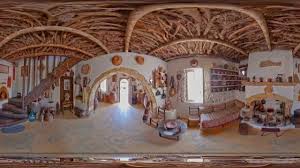
We can say that Lychnostatis is a handicraft. However, it is interesting to its visitors not only for the main building of the museum. At the very edge of the sea there is a unique old mill, brought from the Lasithi plateau. It is painted with poems of the owner in love with his wife. In general, the Lychnostatis museum is quite an attractive place to visit with children of any age, because on its territory and in the building itself you can touch literally everything with your hands. Trying objects by touch – for a child this process is the most important in learning about the world. And Lychnostatis gives young travelers such an opportunity. It is important to note that this place is not a museum in the usual sense of the word. Rather, it is a complex of small exhibitions, each of which is dedicated to some interesting event or period. Some of them are indoors, and some are located in the open air. The kids really like the small two-storey house, furnished in the traditional Cretan style. What is remarkable is that the building was erected using local technology, that is, in fact, it is an architectural monument.
At the same time, you can go in there, touch things, dishes, move furniture. On the territory of Lychnostatis there is also a small chapel, a mill, a hut in which a shepherd and his family once lived, a small vegetable garden with various medicinal herbs, a threshing floor, a traditional oil press, a winery, an apiary, workshops with spinning and weaving machines, a school classroom. You and your children will not have the slightest doubt that all this was once used by local residents – so well preserved are the architectural objects and their furnishings. Lychnostatis is most often visited by tourists (by the way, there is a Russian guide working in the museum), but you can also meet many local schoolchildren and students here, as various seminars, theme parties and master classes are often held on the museum grounds.
ARKADI MONASTERY:
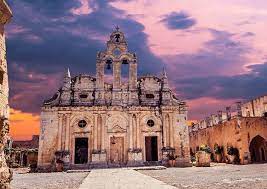
Arkadi Monastery is a famous Greek monastery and a national monument of the island, a symbol of freedom and one of the main shrines of Crete. A trip here will be interesting and educational primarily for all history lovers. This historical monument is a complex of buildings, somewhat reminiscent of a fortress, which was erected in the late Venetian period of the 16th century.
At one time, many monks-scribes lived on its territory, who led a calm, measured way of life. They copied manuscripts, taught at school, worked in a workshop for gold embroidery. From historical chronicles, we know that the monastery in the 16th-17th centuries was considered the cultural center of Crete. This is confirmed by the fact that a huge library worked on its territory. But the whole world learned about it first of all thanks to the sad events that took place here in 1866.
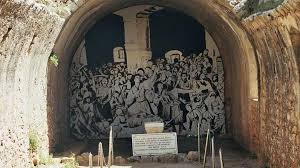
As is known, a large Turkish army of 15 thousand people surrounded the Arkadi monastery, where at that time there were 300 rebels, as well as 600 women and children. When it became obvious that the defenders would either die or be enslaved, everyone locked themselves in a gunpowder warehouse and, having waited until the Turks came very close, blew themselves up, along with one and a half thousand enemies. The heroism shown by these people became an example to follow and a symbol of the island’s freedom.
Every year on November 7-9, the day of remembrance of those tragic events, many visitors come here, solemn memorial ceremonies are held. Today, at the entrance to the monastery, tourists are greeted by a memorial, a museum is open, where you can see impressive relics, unique icons, ancient books and priests’ clothes. On the back wall of the monastery there is a panel depicting the tragic events of that day. Although this place is connected with such a sad page in the history of the Greek people, the Arkadi monastery simply amazes with its beauty: it is completely immersed in greenery, flowers and vineyards, it is simply pleasant to wander here and enjoy the silence, occasionally broken by the singing of birds.
